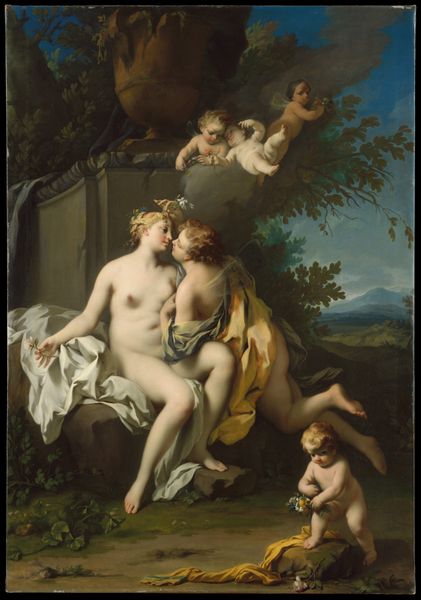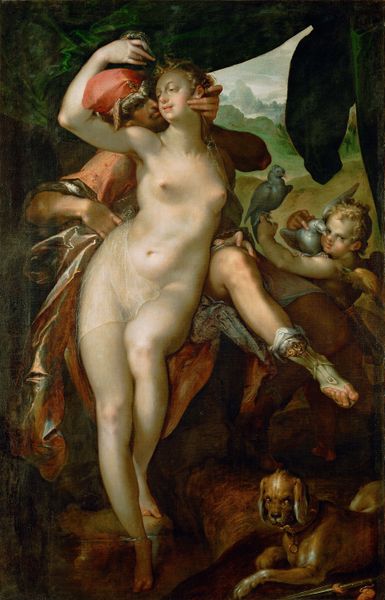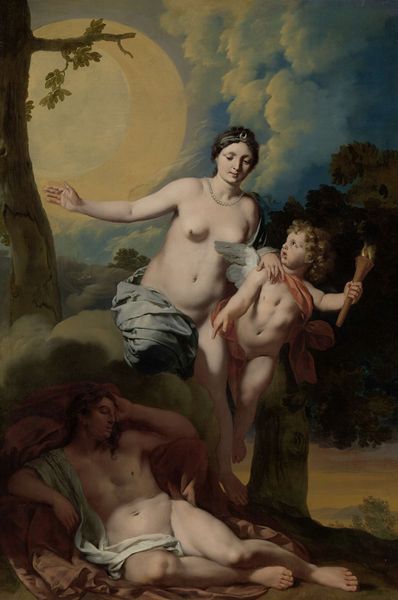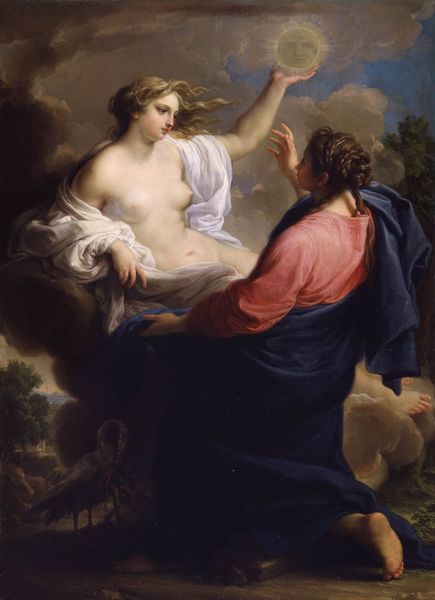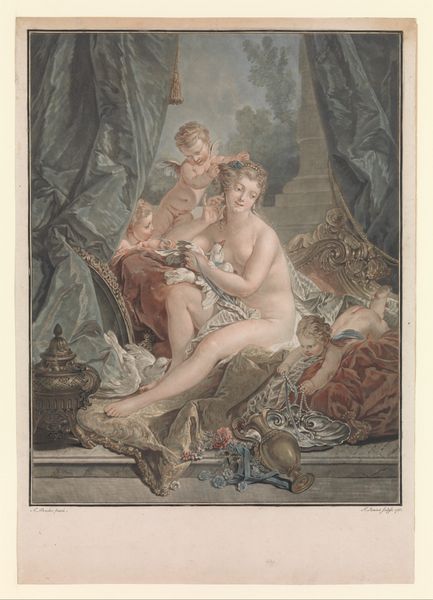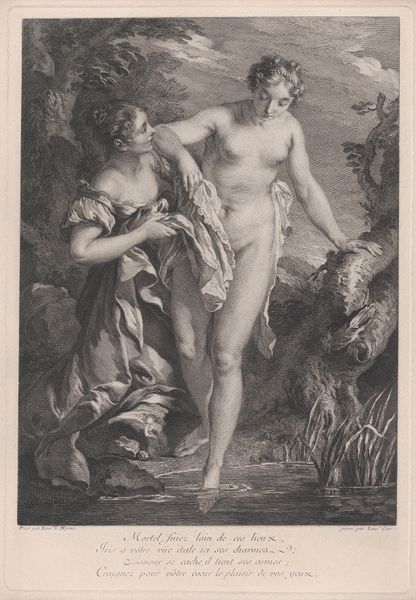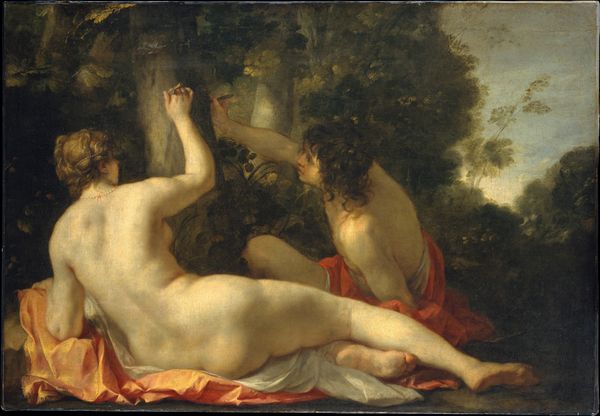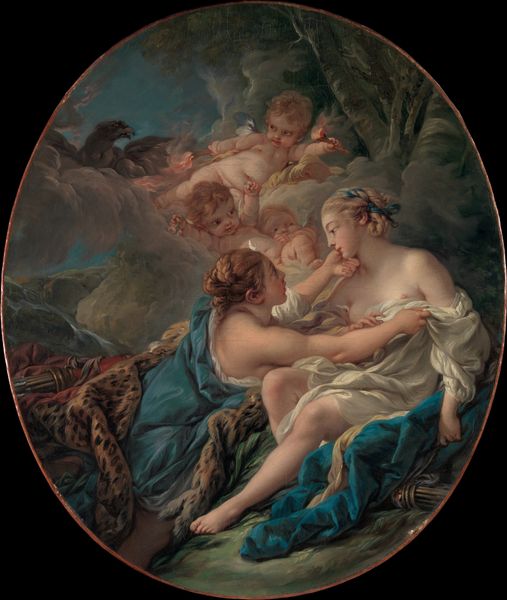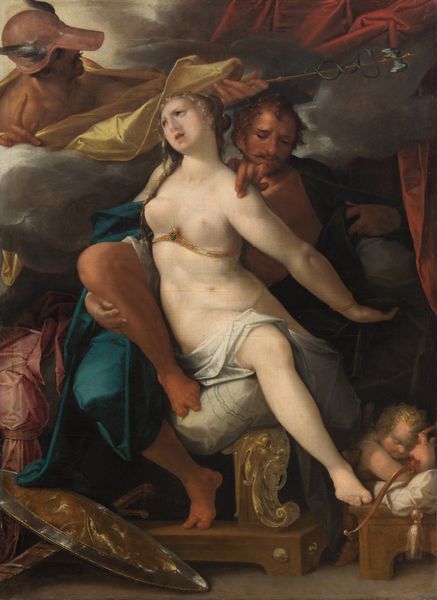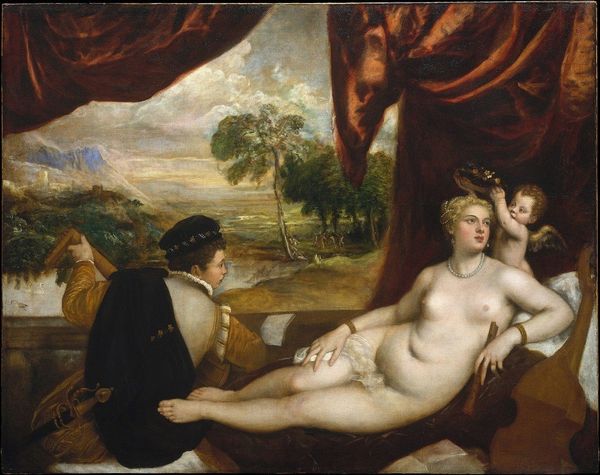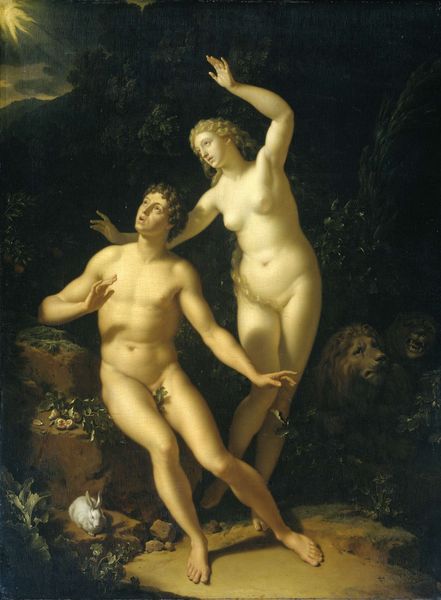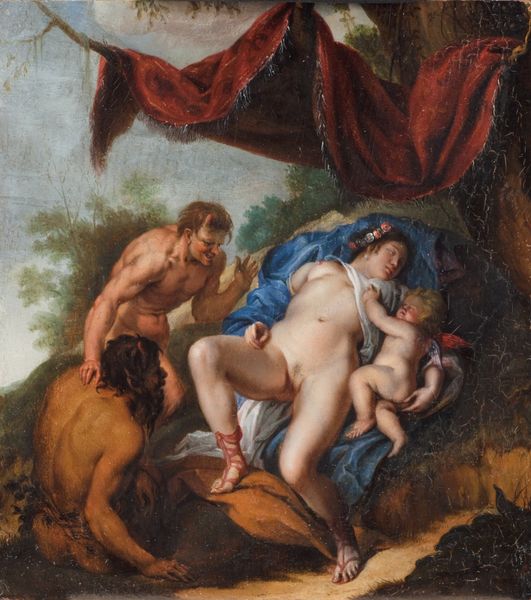
painting, oil-paint
#
painting
#
oil-paint
#
figuration
#
oil painting
#
female-nude
#
mythology
#
history-painting
#
nude
#
rococo
Copyright: Public domain
Editor: So, this is "The Bather," painted by François Lemoyne around 1725. It's an oil painting, and seeing it in person, the pastel colors create such a dreamlike feeling. What stands out to you most when you look at this piece? Curator: The enduring iconography of bathing itself. Across cultures and eras, water cleanses, yes, but it also signifies purification, rebirth, transition... a threshold. Lemoyne, situated in the Rococo period, taps into this potent visual language. Notice the knowing glance of the attendant, the cool, clear water. Editor: Threshold...that's interesting. I was focusing on the soft brushstrokes and idealized forms, typical of Rococo, but I see what you mean. Curator: Exactly! Now, consider who might commission such a work. A member of the French aristocracy, undoubtedly. Why this subject? What narratives and desires were they hoping to conjure through it? Editor: Maybe to emphasize the natural beauty of the sitter? It's very idealized. Curator: And what does idealization tell us about their self-image, their understanding of beauty itself? Are these figures just beautiful bodies, or are they loaded with allusions to classical ideals of beauty and status? The jewels on the bather, the golden cloth draped over the other one: wouldn’t they echo in their contemporary viewers’ imagination? Editor: It adds layers to the meaning I hadn't considered. I was struck by the surface appeal, the beauty, but you're prompting me to dig deeper. Curator: Indeed! Recognizing these visual cues, understanding their roots, helps us appreciate how art communicates not just beauty but deeply embedded cultural values. We now see this seemingly frivolous painting is loaded with intent! Editor: Absolutely. Thanks, I see the painting in a different light now!
Comments
No comments
Be the first to comment and join the conversation on the ultimate creative platform.
